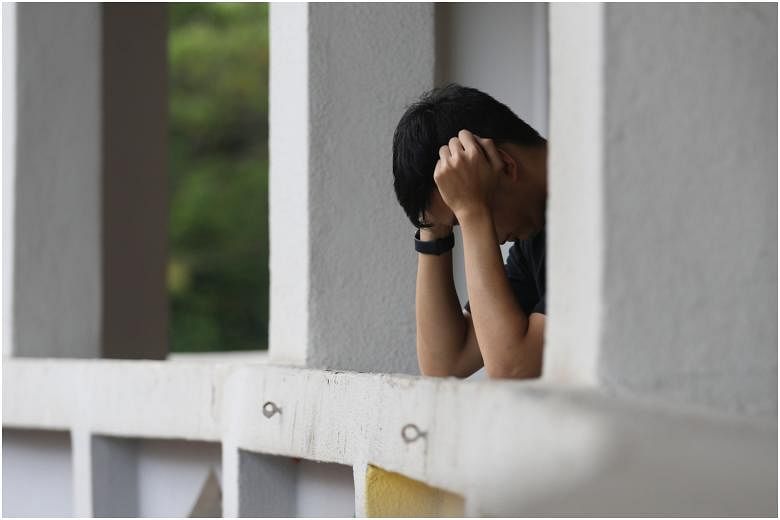SINGAPORE - There are several warning signs that a friend or loved one may be contemplating suicide, Dr Jared Ng, senior consultant and chief of the Institute of Mental Health's (IMH) Department of Emergency and Crisis Care said on Monday (March 28).
These include texting or posting on social media about how they cannot go on living or no longer want to live, or suddenly posting photos of people on high-rise buildings. The person contemplating suicide may also start writing and giving out letters to say goodbye, or giving away their treasured possessions to others.
"Who is able to watch out for these kinds of warning signs and intervene? It is really the family and loved ones," said Dr Ng, who was speaking at a webinar series on mental health organised by IMH and the Temasek Foundation.
His fellow speaker, Dr Patanon Kwansanit from the Somdet Chaopraya Institute of Psychiatry in Thailand's Ministry of Public Health, said people without any professional training can still help their suicidal friends and loved ones by simply responding as laymen.
"Show you care, show empathy, don't (worry) too much about whether you're good enough to be a good listener... and then suggest your friend get proper help or treatment," he said.
Agreeing, Dr Ng added that if the situation is urgent - for instance, if the suicidal friend is already on the ledge - the police should be called as they can intervene quickly and take the suicidal individual to an appropriate agency for help.
Dr Ng, as well as Associate Professor Daniel Fung, chief executive of IMH, who was moderating the session, said that more efforts are needed to address gaps in the suicide prevention landscape here.
Dr Ng said that, like elsewhere in the world, the main causes of suicide here tend to differ among age groups.
For youth, this generally tends to be because of relationship and identity issues, in the areas of roles, gender and sexuality. Youth may also be stressed by family problems, or marital issues their parents face.
The leading causes for adults tend to surround relationships, financial or employment issues. For the elderly, they are issues leading to isolation, such as widowhood or painful, disabling, terminal illnesses.
From data around the world, about 60 per cent of those who attempt suicide do so on impulse, while the remaining 40 per cent will have planned their attempt for some time, said Dr Ng, adding that there is no such data available for Singapore specifically.
He noted that there are already multiple measures in place to help deal with suicide here on various levels. These include school-based psychological well-being and skills training programmes, screening to identify those who might be at risk, public awareness campaigns and helplines, as well as improved media reporting and portrayal of suicidal behaviour.
Dr Ng said that one of the main gaps here is in the reliance on the police to respond to attempted suicide cases.
Pointing out that the United States is setting up a national suicide prevention hotline, separate from the main police line, he said a similar initiative in Singapore would not be possible at the moment, as there is currently no one here who can respond to suicide cases as quickly as the police.
He added: "So we still rely on the police.... (but) when the police come, that comes with a certain stigma. And people may not be so willing then to call for help."
Prof Fung said there is a need to look at what might cause a person to even think of suicide in the first place.
This could involve looking into adverse childhood experiences, tackling trauma that children might experience so as to reduce the risk of suicidal thinking in the long run, he said.
"If you really truly want to prevent suicide, then you have to go upstream," added Prof Fung.
Citing a poem by English writer Joseph Malins, Dr Ng highlighted "the importance of building a fence at the top of the hill, rather than have a fleet of ambulances down in the valley".
He said: "You want to prevent people from falling and I think the same applies for suicide prevention... every suicide is a tragedy."


